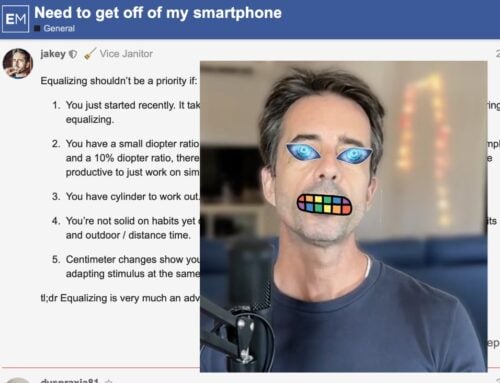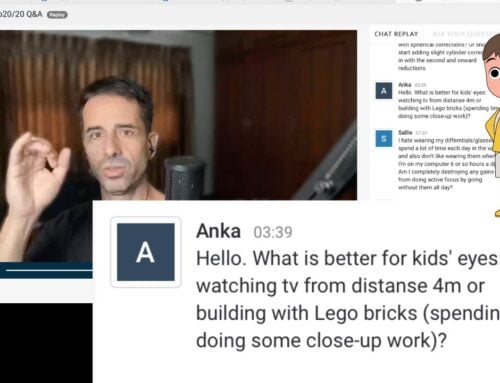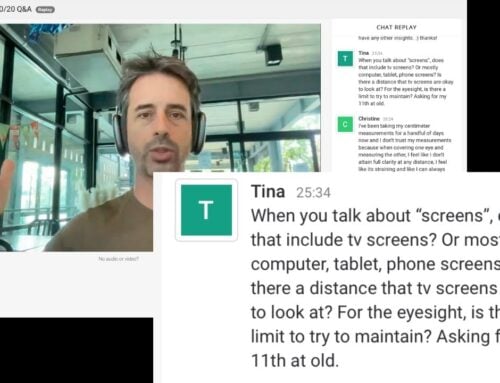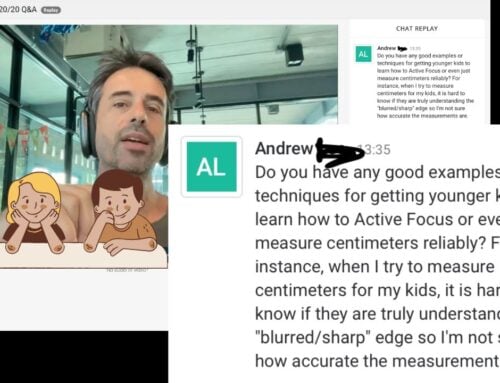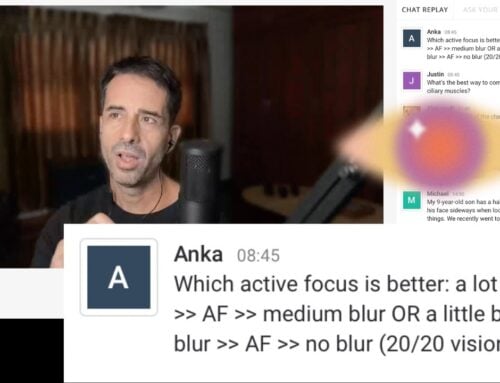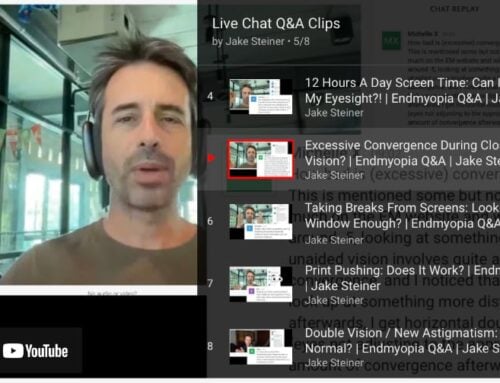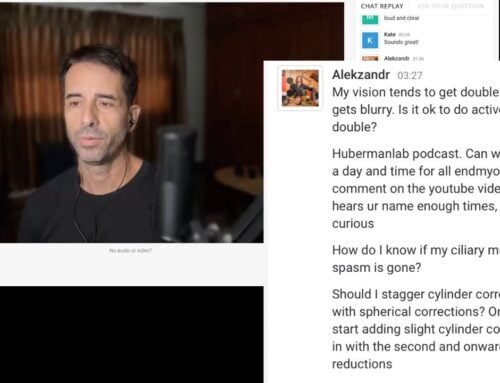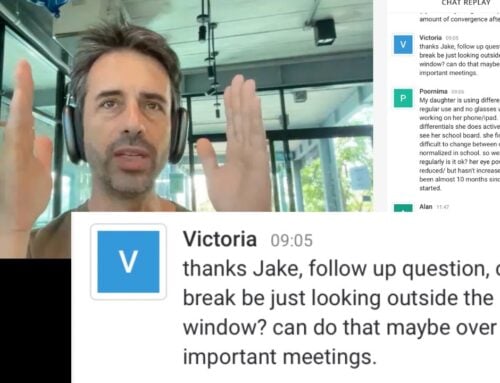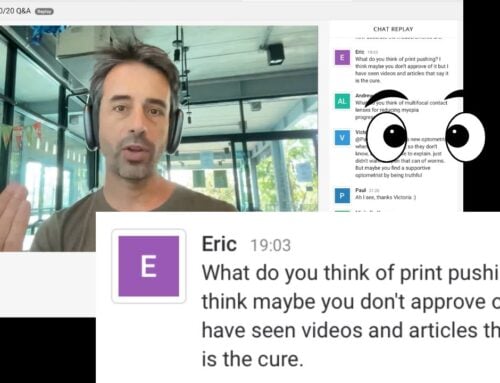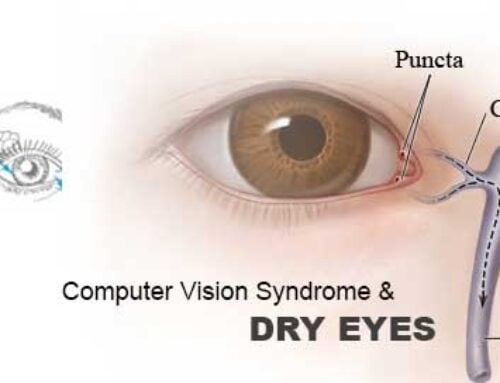You probably have seen a wide range of student vision improvement rates and diopter reductions.
Very generally, if you look at the big picture, there’s a first burst of improvement that falls into the 1 diopter reduction range, somewhere within the first 90 days (very, very generally speaking). Mostly that’s reduced close-up strain, sorting out over-prescription, and reducing ciliary spasm. I sometimes refer to this diopter as the “junk diopter(s)”, since what you get rid of in those first few months really shouldn’t be there in the first place.
The junk diopter is also the spearhead that contributes most to progressive myopia. Think of it as the tightened screw that’s pushing your eye. The combination of eye strain, ciliary muscle spasm, and over prescription a the recipe for the increasing myopia disaster that you probably already experienced.
After that first tangible improvement, things settle in (again, very generally speaking) to a more relaxed rate of change. A bit less than 1 diopter a year reduction, is the standard.
Now you likely have seen quite a few student stories doing a whole lot better than that. Multiple diopters a year reductions, numbers that may be making you all sorts of envious. Why do some do so much better than others?
Between your individual biology, your environment, your disposition, there are lots of potential reasons.
The big one though, is your cumulative daily close-up time.
I just explained this in a forum post, which you might find interesting:
Just make sure that your focusing ability is the same at the end of the day as it was in the beginning. That may mean taking an hour walk, and the first 45 minutes of it seeming like a slow focusing blur fest.
If you relax and just enjoy the walk and pull a bit of focus here and there (not with clenched fists, just as you feel inclined), you’ll find that sooner or later things pop back into focus they way they did before you started the work day.
That’s the bare minimum. You can judge the degree of the ciliary spasm by how much time it takes for focus to normalize when you’re outside. Knowing that you can experiment with breaks and lighting, and eventually know just how much close-up you can do before you really stress your eyes.
And stepping back from there, you can correlate improvement rate with how low you keep the stress (longer term Snellen and centimeter results, and notes on close-up strain). That’s to some degree how you see some students improving very rapidly, and others more slowly. That close-up is one of the big factors but once you know how it affects you, you can make your own choices of what you need for close-up, vs. what you want for improvement rate.
Make sense?
Test your before-work, and after-work distance acuity and focusing speed. They should be about the same (given the same relative lighting). If the latter is noticeably worse, you have quite a bit of eye strain in your day.
This is what impacts improvement rate more than anything. Make your own decisions on priorities, knowing all of this (and testing it first hand).
More on this subject in the thread “how to deal with excessive close-up”.
There is a ton more in the forum, if these pro topics scratch an itch for you, that you want to get more for. The blog is like the polar bear perched on top of the tip of the myopia insights ice berg. Worthwhile polar bear for sure, though lots more of the good stuff is down below.
Housekeeping: The invite system for BackTo20/20 is in the process of a modest overhaul and update. There’s been various ways to cheat the system (kind of) by re-signing up to the e-mails, or by deleting browser cookies. In the end there’d still be the issue of the program just being full, but the cheat attempts have been rampant (and I feel bad, I do want to give everybody access – I just don’t want to log in and have a million forum questions to answer every day).
The cheatey options are mostly about to be eliminated. I will however be more open to individual e-mails requesting invites, especially if they’re well written and make me feel confident that the applicant will be a good addition to our group. ;)
Cheers!
-Jake





